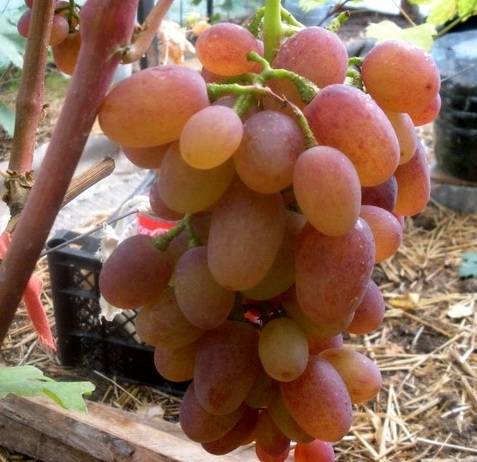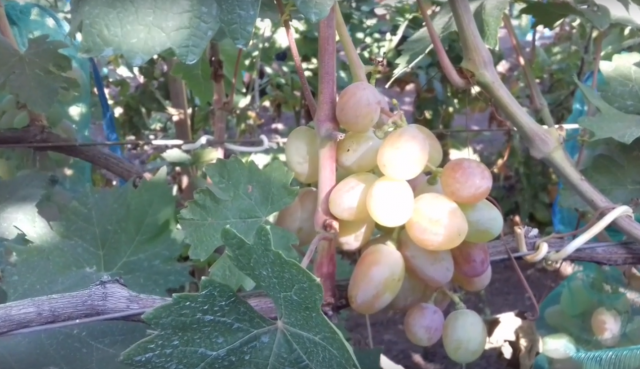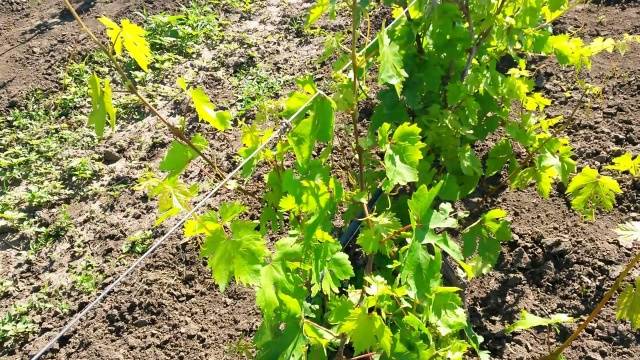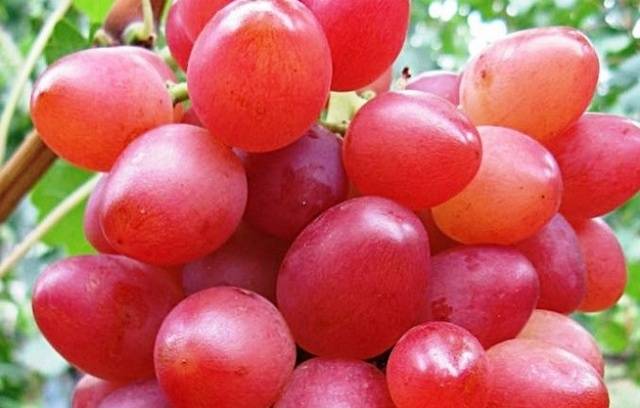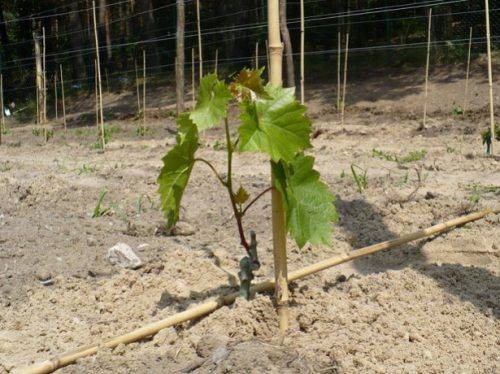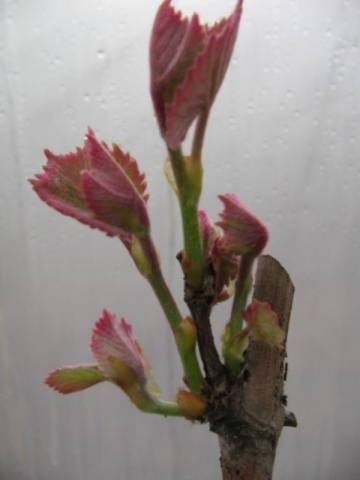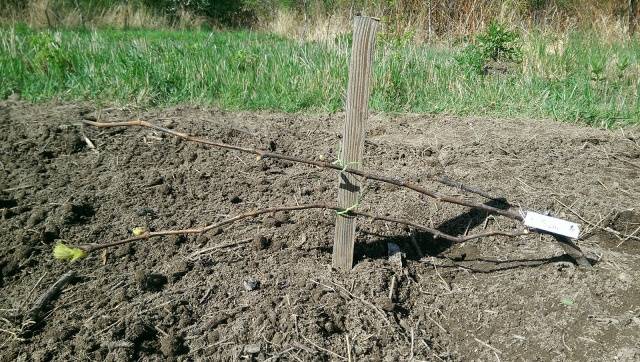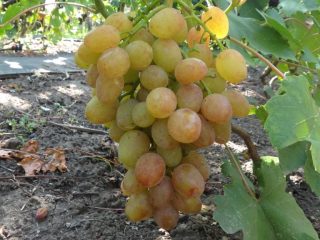Content
Table grape varieties are becoming more and more popular. Breeders are constantly working on the cultivation of new delicious forms that captivate with both taste and attractive appearance. The early rosé grape, Ruta, will brighten any table, while in the southern regions, a powerful vine with magnificent bunches will serve as a wonderful decor in the yard or garden. The variety was bred by the famous Ukrainian winegrower V.V. Zagorulko on the fertile lands of Zaporozhye, where there is a temperate continental climate with long dry periods. The hybrid form of the Ruta grape was obtained from crossing the famous varieties Talisman and Kishmish Radiant.
Description
The Ruta grape vine, according to the description of the variety presented by the breeder, and the reviews of gardeners, is vigorous, on fertile chernozems reaches 4 m.But it does without rationing and ripens almost completely, up to 75% of the length of the annual growth. Vigorous growth is observed in vines of the Ruta variety, planted by cuttings. Grasshopper is weak, shoots with a cover are bright brown, nodules are red. The bright green large leaves are clearly divided into 5 lobes. Flowers of grape variety Ruta female type.
The clusters are medium in size, weighing from 400 to 800 g, cone-shaped, rather loose. The stalks are green-brown, strong, short. Bunches of Ruta grapes attract attention with a brightly saturated color of pink berries, with a raspberry or amber tint, depending on the dose of sunlight. Oval or nipple-shaped berries are dense, large, on average 22 x 36 mm, weighing from 7 to 12 g. The skin of the grapes is dense, but tasty. The seeds are quite large.
Sweet, fleshy flesh with barely noticeable, appropriate acidity, slightly crunchy. Ruta grapes taste fruity, harmonious. Light notes of nutmeg appear if the vine grows on sandy soil. This feature is stated by the author of the grapes in his annotation to the variety. Connoisseurs feel a light cherry flavor in Ruta berries. Sugar content is sufficient –20-21%, acidity index: 7.5 g / l.
Characteristic
Sweet, beautiful berries, a wonderful view of a powerful and unpretentious vine, resistance to fungal diseases and indifference to wasp attacks make Ruta grapes a welcome guest in every garden in the southern regions of the country.
Fruiting
The hybrid form of Ruta grapes is gaining popularity for its unique taste and early ripening period - 90-100 days.
- Already from the beginning of August, you can feast on beautiful pink berries with delicate pulp and rich taste;
- The fruits hang on the bunches until the end of September, keeping their pleasant taste and without losing berries. Due to the dense skin, the berries retain their presentation for a long time, without cracks or signs of rot;
- The yield of Ruta grapes, as gardeners note in the descriptions of the variety, is average. But it attracts the stability of fruiting;
- You don't have to wait long even for the first berries. Signal clusters appear already in the second year after planting.
Features of the vine
The vigor of the vine and the female type of flower are the reason for incomplete pollination, unless other varieties grow nearby that bloom at the same time as Ruta. For example, Arcadia grapes are a good pollinator, which is by no means rare in the plots. But the berries are still ripening, Ruta grapes do not have problems with peas.
- A vigorous bush must be provided with a large area for adequate nutrition;
- When planting Ruta grapes, the gardener, having familiarized himself with the description of the variety, must install strong supports so that they can carry a weighty bush;
- The variety is well suited for planting near arches;
- Ruta's cuttings take root well;
- The grapes of this variety have good compatibility with all rootstocks.
Genetic properties
The heat-loving Ruta variety can grow without problems in the Krasnodar Territory. The grapes have low frost resistance - they can withstand only -21 degrees. Gardeners should arrange for shelters in advance for the winter.
The Ruta variety is resistant to typical grape diseases, including diplodia. According to the description of the author of the variety, resistance to mildew is estimated at 3.5-4 points, 3 points each - to gray rot and powdery mildew.
Advantages and disadvantages
The dessert variety Ruta has a number of advantages.
- Early maturity;
- Rich flavoring bouquet;
- The ability of the bunch to hang on the vine for a long time, while maintaining the delicacy;
- High commercial properties: appearance, taste, long storage period (up to November), transportability;
- Good survival rate of cuttings on different types of soils.
Shortcomings in the selection of the Ruta grape variety are considered, according to the reviews of those who grow it:
- The presence of seeds in delicious berries;
- Increased growth potential of the vine, due to which the Ruta grapes need to be allocated a large area and strong trellis should be installed.
Growing
The undemandingness of the vine to the soil makes it possible to plant the Ruta variety in different regions, including in the central regions. In the middle climatic zone, grapes will be a covering crop. But Ruta's hybrid has a significant advantage due to its early maturity. The vine will have time to give the harvest and ripen.
Reproduction
Grapes are easily propagated by cuttings harvested after autumn pruning. In the spring, cuttings are grafted onto different rootstocks, and also rooted.
- Selected mature, 6-9 mm thick sections of vines with 2-4 eyes. Places of cuts are covered with plasticine or wax;
- Wrapped in damp paper or cloth and placed in a plastic bag with holes for air to enter;
- Store in a basement or refrigerator;
- At the end of February, the cuttings are soaked for 36-48 hours in filtered water, it is possible with the addition of root formation stimulants;
- Pruning shears are cut off old sections and placed in a container with water enriched with a growth stimulant for germination. In this case, the upper cut is covered with paraffin. The water level is not higher than 4 cm;
- The water is changed once a week, activated carbon is added;
- Leaves appear after 15-17 days, roots - after 24-30 days;
- Cuttings with roots are carefully planted in a loose, sand-diluted substrate.
Landing
The Ruta hybrid is planted in the spring in a sunny place, on the south side of the buildings.
- Holes with a size of 0.8 x 0.8 x 0.8 m for several seedlings of this variety are placed 3 m from each other;
- Drainage material is placed below, then fertile soil with humus, 50 g of potassium chloride and 70 g of superphosphate;
- A seedling is placed on a mound of clean soil, sprinkled with soil, watered and, having compacted the near-trunk circle, mulch.
Care
The vine needs minimal maintenance, except for the installation of a system of strong supports.
- Periodic watering and loosening of the soil, especially during flowering and ovary formation, will support the Ruta vine;
- In spring, the bushes are moderately fed with complex mineral fertilizers, keeping in mind the vigor of the vine;
- Spray preventively with copper sulfate;
- In the pea phase, the bunches are normalized if there are too many of them;
- Pruned vines are sheltered for the winter.
Pruning
On the bushes of Ruta grapes, during spring pruning, up to 60 eyes are left, because clusters are better formed on thin vines.In the summer, excess shoots are cut off, allowing the clusters to ripen better. In the fall, the vines are cut into 8-10 buds.
Chemical protection
For a Ruta hybrid, two preventive sprays with fungicides are enough to protect against diseases. In the case of widespread infections, repeated treatments are used.
Insecticides are used against pests:
- Bi-58, "Tokution", "Tsidial", "Ekamet", "Tsimbush", "Fozalon", "Sevin", "Sumicidin" - against the grape leafworm;
- "Neoron", "Aktellik", "Talstar", "Omite" are fighting the grape mite;
- Carefully use carbon disulfide in the fight against phylloxera.
If there is enough space in the yard, Ruta grapes will be a good purchase. The vine will decorate the courtyard and present delicious vitamin berries.
